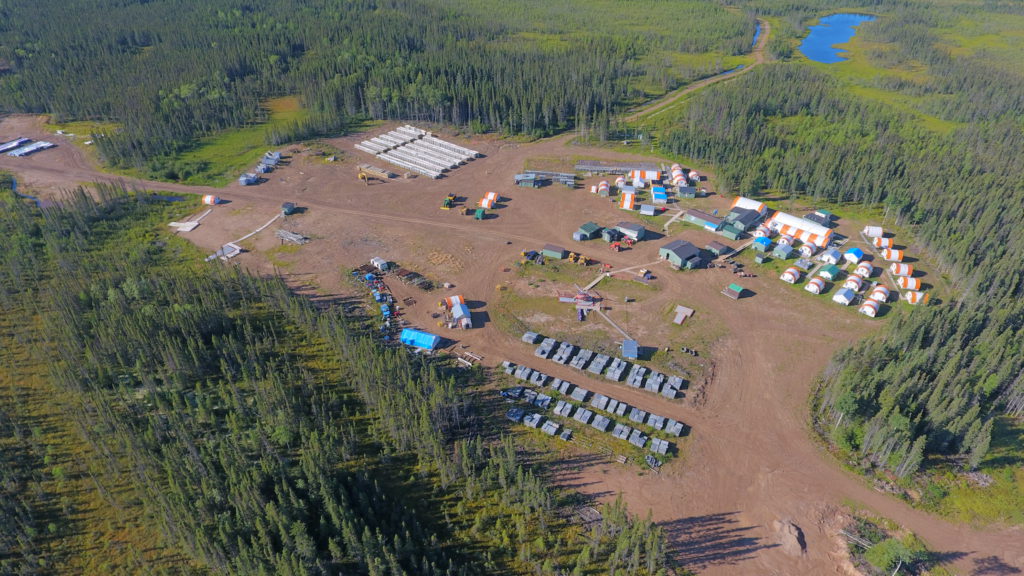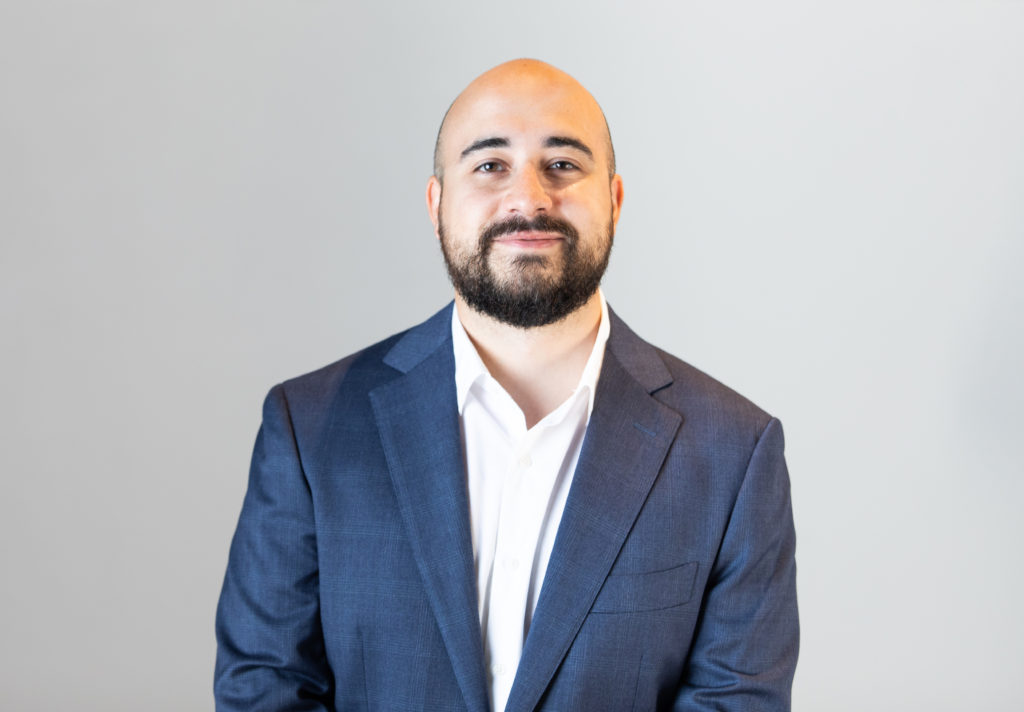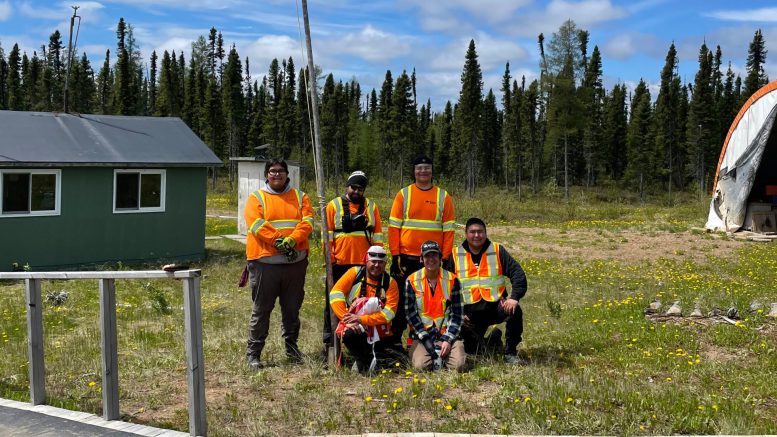Wyloo Metals made a big splash last year with its battle against Australian behemoth BHP (NYSE: BHP; LSE: BHP; ASX: BHP) for control of Ring of Fire junior Noront Resources.
The private, Western Australia-based company, owned by Australian billionaire Andrew Forrest’s Tattarang investment group, outlined its vision for Noront’s high-grade nickel-copper-PGM Eagle’s Nest project early on. The miner plans to build a net-zero mine that would process the nickel in-province and create a ‘future metals hub’ while awarding $100 million worth of contracts to First Nations-owned businesses and establishing a training and employment centre for northern and Indigenous communities.
And most importantly, perhaps, it promised movement on a project that has been stalled by a lack of infrastructure and by disagreement among First Nations on development, invoking Forrest’s experience as founder of major iron ore producer Fortescue Metals Group (ASX: FMG).
“Seventeen years ago, people told me Fortescue’s deposits would never be mined because there was no infrastructure to access our projects. We proved those critics totally wrong and we want to do the same in the Ring of Fire,“ said Andrew Forrest in a press release last year during the takeover battle for Noront.
After emerging victorious from the “fierce battle” with BHP and closing the acquisition of Noront in April, Wyloo is wasting no time getting to work.
Exploration potential
In early June, the private Australian company reopened the Esker exploration camp in Ontario’s James Bay Lowlands for the first time in three years. The company then began a 3,000-metre drilling program at Blue Jay — the first of 76 targets it intends to drill in the Ring of Fire.
The acquisition includes five existing high-grade orebodies: Eagles nest (nickel-copper-PGMs), McFaulds (copper-zinc) and the Blackbird, Big Daddy and Black Thor chromite deposits.
However, Wyloo CEO Luca Giacovazzi says that although those deposits have potential to be mined, the main attraction of Noront’s Ring of Fire claims was the exploration potential.
“We love the existing mines, but we thought, wow, these guys have just scratched the surface of the exploration potential here,” said Giacovazzi in an exclusive interview at the Prospectors and Developers Association of Canada conference in mid-June.
“Exploration-wise, the Ring of Fire must be one of the most exciting packages of ultramafic rocks in a mining friendly jurisdiction.”

Aerial view of Wyloo Metals’ Esker camp in northern Ontario’s Ring of Fire. Credit: Wyloo Metals
Eagle’s Nest, the subject of a 2012 feasibility study that projected an 11-year mine life, is well understood and advanced, hosting proven and probable reserves of 11.1 million tonnes grading 1.68% nickel, 0.87% copper, 0.87 gram platinum per tonne, 3.09 grams palladium and 0.18 gram gold.
But Wyloo thinks it could have a similar deposit in Blue Jay.
The deposit is already known to start at the surface. Deep drilling at Blue Jay will indicate its actual size – and whether, like Eagle’s Nest, it’s a narrow, near-vertical continuous magmatic massive sulphide body that could be mined with a minimal surface footprint.
The company should reach its target depths of more than 1,000 metres in late June or early July. “We didn’t monkey around,” Giacovazzi says. “We drilled 1,200 metres underneath it and we think that the orebody extends that low.”
Now that the Esker camp is reopened, Wyloo intends to keep it open year-round. Other drill permits are in progress, and while longer-term the company is interested in the chromite deposits it now also holds, its first priority is nickel.
“For now, the nickel’s the main focus for us. I think we need to show everyone what a world class mine looks like before we start to think about the chrome. But the chrome ore bodies are there. They’re the best in the Western Hemisphere, it’s a critical mineral. It’s something that the U.S. and Canada don’t have a secure supply of.”
Wyloo made its initial investment in Noront in late 2020, buying out private equity Resource Capital Funds’ 22.5% holding and 1% net smelter return (NSR). It also issued a US$15-million debenture to Noront that was later converted to shares — giving Wyloo a 37.4% stake in the junior — and a leg up on BHP.
“We bought 40% of Noront for $28 million… So it was a lot easier to beat BHP because we had such a low entry cost,” the Wyloo CEO says.
Giacovazzi, who has a background in investment banking, says he has “heaps of respect for BHP,” who “saw the same potential that we did.”
In the end, Wyloo paid $1.10 in cash for each share it didn’t already own, in a deal that valued Noront, holder of 800 sq. km of claims in the Ring of Fire, at $616.9 million.
Ontario opportunity to be ‘world leaders’
Wyloo was formed only three years ago, and like other companies owned by the Forrest family, it has a clear purpose: “We want to mine metals that are actually going to have an industrial purpose. And a big focus for us was: can we play into the decarbonization story?” Giacovazzi says.
“The electric vehicle thematic… it’s as big as like the next industrial revolution. It’s the biggest change in mobility and how we do things in energy that we’ve seen in the last 100 years,” he said.
“And I think your government is doing an awesome job positioning themselves to play into that ’cause it’s really going to change everybody’s lives and you have an opportunity to be world leaders in producing very green minerals [that] are going [into] electric vehicles.”
Wyloo sees opportunity in Ontario that doesn’t exist in its homeland of Western Australia. Not only does Ontario have the mineral endowment, but it also has a manufacturing base, clean energy, and access to the U.S. market, Giacovazzi notes. The provincial government has also announced a raft of investments this year to support the development of a homegrown battery supply chain, including in an EV battery plant being built by Stellantis in Windsor.
“You’re a country that is rich in these [green] minerals, but you’re a country that also has very clean energy, which is a huge privilege, and you have a huge end market, so you’ve got the trifecta,” he said. “As an Ontarian, you should be really proud to live in this province and you’ve got a really bright future – so much so that I’m tempted to come move here.”

Wyloo Metals CEO Luca Giacovazzi. Credit: Wyloo Metals
Hoping to contribute to that battery supply chain, Wyloo has committed to processing nickel in Ontario, promising to spend $25 million on studying the potential for in-province battery material production.
Since its formation, Wyloo has quickly built up a portfolio of exploration projects in Western Australia (nickel-copper PGM and others) and is studying the feasibility of building a nickel sulphide processing plant in Australia in a joint venture with battery metals producer IGO Ltd.
Wyloo also has other investments in Canada. In January 2021, it signed an agreement with Orford Mining (TSXV: ORM) to earn up to 80% of the West Raglan nickel sulphide project in northern Quebec by spending $25 million on exploration over seven years. This year, it’s spending $4.9 million on exploration, aiming to drill about 2,500 to 3,000 metres focused on the Frontier, Beverly and Boomerang zones.
And at PDAC, Giacovazzi said the company had just closed another deal for a grassroots exploration project in Quebec that’s a “Voisey’s Bay lookalike” called Baie de Moisie, near Sept-Îles.
“It’s a large ultramafic intrusion. A bunch of prospectors discovered it when a road was being built and when they excavated the road, they saw the rocks and they tested the rocks. It’s early, early stage. It’s very green fields, but it’s a big ultramafic package.”
Fraught history
While the Ring of Fire undoubtedly has potential for more discovery – nickel, copper, PGMs, chromite, gold and more — it also has a turbulent history.
U.S.-based Cleveland-Cliffs (NYSE: CLF) invested more than $500 million in the area, hoping to develop the chromite deposits, before abruptly stopping work in 2013 and withdrawing completely from Canada, seeing no progress on infrastructure and no way to develop a mine for decades.
Some First Nations whose traditional territories lie in the region — notably Marten Falls and Webequie — are supportive of development. But others are not, including Neskantaga, and several western James Bay communities such as Attawapiskat — who even declared a moratorium on development last year.
Giacovazzi says the company is committed to engaging with all the First Nations communities.
“It’s very early days, I’ll remind everyone that we’ve owned the business for eight weeks, so there’s still a long way to go, so don’t go printing that we’ve spoken to every First Nation, because there’s a few we haven’t got to yet,” he said.
“It’s going to take us a little bit of time, it’s not going to be a quick turnaround, but we’re committed to engaging really closely with every community, making sure they understand our project and what we’re proposing as a development.”
Indigenous engagement
First Nations support is necessary to develop infrastructure in the remote region, 540 km northeast of Thunder Bay, Ont. — without which mining wouldn’t be possible.
Giacovazzi characterizes the Ring of Fire as “a First Nation led” mineral development. “It isn’t actually a mining-led mineral development because it’s the First Nations who are the proponents for the road, and without the road we don’t have a mine. Ultimately, we’re there to support Marten Falls and Webequie, and Aroland, and it’s the three of them whose territories we directly pass through and [who] are directly impacted. They’re really the leaders of that road development,” he said. “And then of course, we’ve got our responsibility to all the surrounding communities as well that we need to work through.”
Environmental assessment processes are currently under way for three sections of a north-south all-weather road into the Ring of Fire: the 200-km Marten Falls access road; a 107-km supply road between Webequie First Nation and the Ring of Fire camp; and the 155-km Northern Link road connecting the two segments. Each one is being advanced separately.
At the same time, a regional assessment process for mining activity in the Ring of Fire is being planned by the federal Impact Assessment Agency (IAA). It has only completed one other regional assessment — a new type of study introduced under the 2019 Impact Assessment Act. After releasing a draft terms of reference outlining the proposed process in late 2021, the agency is still considering feedback received in the planning stage before beginning the assessment.
“We’ve got the EA process, then we also have the regional assessment process that’s ongoing and the key word there is it’s a process — we’ve got to go through it,” Giacovazzi says.
The company has already made commitments to mining with as small a footprint as possible — it says the surface footprint will only be about 1 sq. km — and developing Eagle’s Nest as a net zero mine.
In addition, tailings will be deposited underground, and all process water will be reprocessed and reused.
“The other beauty of Eagle’s Nest is it starts at surface, so when we develop we’re almost straight into ore, so we don’t have a whole lot of waste that we need to stockpile somewhere — we’re right into the ore and we develop as we go, which is great — not all orebodies are blessed with that unique characteristic.”
Giacovazzi admits building a net zero mine in a remote area lacking any power infrastructure will be challenging. The company is looking into renewable energy options combined with batteries.
Wyloo hopes to apply lessons from Fortescue in bringing jobs and economic opportunities into nearby First Nations communities. About 25% of Fortescue’s workforce is Indigenous out of an Indigenous population in Australia of about 3%.
“I think the key to (Forrest’s) success was that he started really early and that’s something that we’ll definitely be adopting – it’s that early engagement from day one,” Giacovazzi says. “Something that worked well for us in Australia was we said, if you train with us and complete your training, we’ll guarantee you a job. Too many mining companies and governments spend a lot of money training people, but never actually provide them with the jobs.”
Twenty-two of Wyloo’s 31 employees in Canada are Indigenous.
The company also wants to start a bank guarantee program whereby Wyloo could act as a guarantor for First Nations businesses to get their first loan from a bank, something it believes could help catalyze Indigenous-owned businesses, and as part of their procurement policies, encourage companies to partner with First Nations to develop capacity.
Giacovazzi says First Nations communities are already “super entrepreneurial.”
“Everything they do every day is entrepreneurial, to operate up in the North, it’s not easy and I look at … already the services they provide us. We use a drill contractor that is part owned by Webequie. We reached out for a graphic designer to help us rebrand the company, and guess what, we found one, an Indigenous graphic designer. You have guys that have started businesses selling PPE,” he says.
“It’s already all there — the embers on there, we’re just going to try and blow some oxygen on it so we can start a fire.”


Absolutely thrilled with this news. Sounds like they,re doing things right. An ambitious project that will impact the economy of Ontario. Welcome.